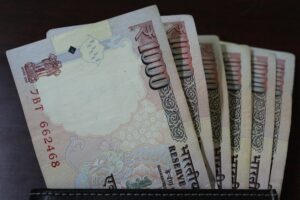Impact of Falling Gold Prices on Gold Loan

Due to issues like increasing coronavirus cases, US-China tension and slowing down of the economy has led to a rise in the gold prices across the globe. The rise in gold price has helped the financial institutions to lend more money to the borrowers against gold. According to the Fitch ratings, Manappuram Finance and IIFL Finance saw a growth of 4-5 percent in March-June 2020. If more borrowers take a gold loan then it will boost the interest income for banks but with that, it increases the risk associated with a fall in gold prices.
Basics of gold loan
Gold loan is a preferred option for many people because of its secured nature and higher gold collateral valuations. But it also has risk attached to it, if the gold rate declines then it can have an impact on your gold loan. There is a direct relationship between the gold price and gold loan when the price of the gold rises the demand for the loan against metal also increases and vice versa.
If the price of gold starts falling by 30 percent – 40 percent then the borrower may have to put up more gold as collateral or make the good margin cash. In case the borrower is not able to make good margin cash or put up more gold as collateral then the bank would have to auction the gold of a borrower which has been pledged as security. There are chances that if the Loan-To-Value ratio (LTV) increases the lender can ask for prepayment.
According to the market expert, “Falling gold price is a negative as far as the growth outlook of gold loan companies is concerned. They will have to lend lower amounts against the same quantity of gold, so this will pressurize AUMs. At the same time, costs remain fixed and pull down profitability. We don’t think there is any big impact on asset quality as they lend at 75% LTV.”another option is you can avail Cash against Gold which would be 99% around the actual value.
After 2012-2013, when the world saw the sharpest decline in gold prices. During that time gold funds experienced huge sell-offs from the investors. It did not only affect the investors but also the borrowers as fewer borrowers lend money against gold if the value of the gold falls. For example: For Muthoot Finance and Manappuram Finance credit costs ranged between 0.2 percent and 0.8 percent, whereas Manappuram Finance reported a loss in 2013 in Q4 which was mainly reported due to reversal of accrued interest owed by del Credit costs ranged between 0.2% and 0.8% for Muthoot Finance and Manappuram Finance, indicating that recoveries remained acceptable. Nevertheless, Manappuram Finance reported a net loss in January-March 2013, largely on account of the reversal of accrued interest owed by default customers.
To keep the situation under control, the regulatory body, Reserve Bank of India caps the LTV on gold loans by NBFIs of 75 percent provides a buffer against these risks. To reduce the risk further some lenders have reduced the LTV ratio to 65 percent to better manage collateral risks in the near term.
Recently, the RBI has allowed 90 percent of LTV ratio on gold loans for banks and 75 percent for non-banking finance companies. The decision has been taken so that people can meet the cash requirements in tough times like Covid-19.
In the testing times, the prices of gold may fall, so, the borrowers and investor should be prepared with the impact that it has on the gold loan. The risk can be averted if lenders keep a buffer against these risks.






